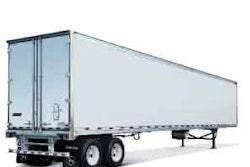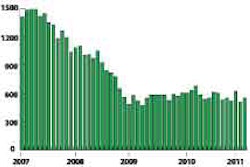A new take on an old concept

Fifty years ago, Ford revolutionized the commercial vehicle world with the debut of its Econoline commercial van. Granted, there were delivery vehicles before the Econoline; there even were full-blown delivery vans developed by now-defunct truck manufacturers such as White Horse.
Before 1961, the basic commercial vehicle design for pickup-and-delivery applications was the “sedan delivery” configuration – basically a beefed-up station wagon with the seats removed for cargo storage. These classic vehicle designs are popular with restorers today – when a surviving example can be found. But they weren’t efficient in terms of cargo-carrying capacity – or easy to load or unload.
But the Econoline was a new concept: The entire vehicle – from its flat nose and mid-mount engine to the tall, wide cargo area – was optimized from the ground up as a dedicated urban delivery vehicle. Automakers never have been shy about borrowing ideas from one another, and it wasn’t long before Ford’s competitors also were offering commercial-grade delivery vans.
Strange as it may sound, Ford considered the original Econoline a “compact” model since it was mounted on the company’s midsize Falcon chassis. But by the late 1960s, Ford was building Econolines on its F-Series truck chassis, ushering in the age of the true commercial-grade delivery van with a vehicle configuration that continues to dominate the North American medium-duty van market.
Today, some foreign automotive companies are betting big money that the old Econoline-based delivery van concept is getting a bit long in the tooth. As a result, a new range of commercial-grade delivery vans now are entering the North American market, with some new takes on the tried-and-true platform first established by Ford.
Nissan, Isuzu, Dodge and Ford all have new products.
In 2001, it was Mercedes through Freightliner – and Chrysler, which Daimler owned at the time – that introduced the first new van incarnation here with the Sprinter’s North American launch. I’d seen Sprinters on the road during travels to Europe, but at the time, I didn’t think the Sprinter would take off on this side of the pond. There were a lot of pluses – a diesel engine, a noticeably higher roof for greater cargo-carrying capacity and a heavy-duty suspension. But I thought the design was too radical – too “European,” if you will – for American palates.
Despite my doubts, the Sprinter proved to be a stateside hit, outliving Daimler’s ownership stake in Chrysler and this year getting a rededication of sales and marketing support from Freightliner. Now, Nissan, Isuzu and Dodge – and even the progenitor of the species, Ford – are offering new takes on commercial vans.
The Nissan NV has been profiled in CCJ, and a full-road test-drive report is due later this year. And at this year’s NTEA Work Truck Show, Isuzu showed a prototype of its new Reach van developed in collaboration with the UtiliMaster body company and an international parcel delivery provider. Meanwhile, Dodge and Ford have returned to the original “compact” delivery van concept that started this whole line of vehicles 50 years ago.
The new Ram C/V delivery van – also unveiled at the Work Truck Show – is a beefed-up version of the company’s Caravan minivan upgraded to a true commercial vehicle package.
Meanwhile, Ford again has shown that Americans happily will adopt European designs with the importation of the Transit Connect compact van, an overall design that has proven so successful that an all-electric version soon will hit the streets; a refrigerated cargo version, courtesy of Thermo King, also is in the works.
It’s strange seeing commercial vans taking the spotlight, but with fuel prices rising and congestion becoming an issue, more small fleets and businesses probably will be taking a hard look at these new designs in the coming months.
JACK ROBERTS is Executive Editor of Commercial Carrier Journal. E-mail [email protected] or call (205) 248-1358.











